10 True Facts About The Legendary Honey Badger
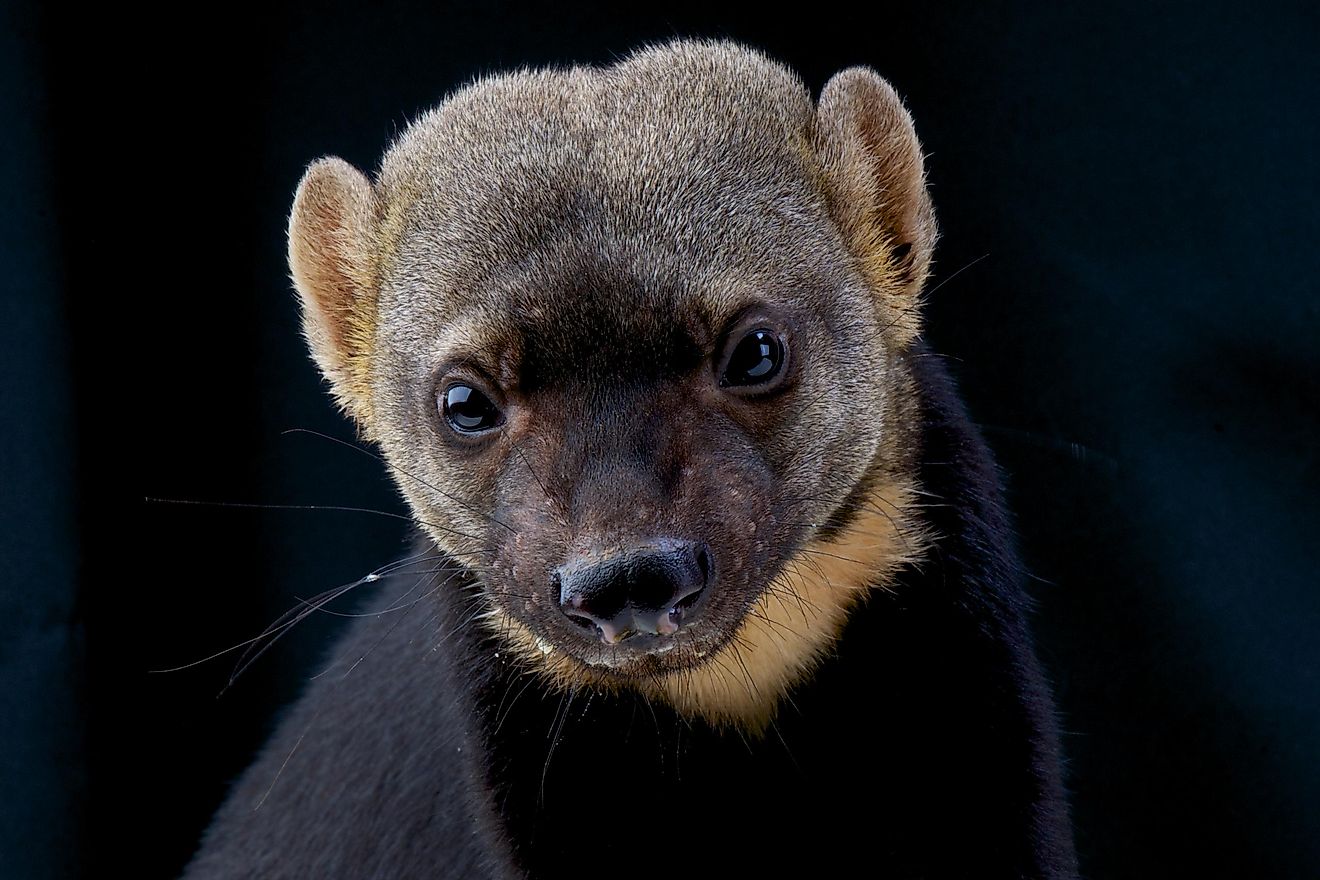
The Honey Badger managed to qualify as the world's most fearless animal in the Guinness Book of World Records. So which parts of their reputation are factual, and which are a legend?
10. Honey Badgers Populations Are In Dramatic Decline
Honey Badgers have already disappeared from the North West, Gauteng, Mpumalanga, Kwazulu-Natal, and Cape provinces in South Africa. Considering the skyrocketing growth of the African continent's population, there will not be enough land left to house the Badgers conflict-free. They have substantial individual areas. And low reproductive rates (typically one new Badger per birthing) mean the population is quite fragile.
Their daring persistence led to a conflict with one enemy they can not outwit: humans. Wires, fences, and sheds can not keep a dedicated Honey Badger away. So they are commonly killed in a trap or poisoned by commercial beekeepers and farmers. They also suffer through indiscriminate poisoning and trapping for jackal and caracal.
Conservation initiatives introduced a smart move to at least deal with the beekeepers' concerns: some areas have started using Honey Badger-resistant beehives. In exchange, their honey is marketed as "Honey Badger-friendly," promising a marketing advantage.
9. Go For The Testicles Tactic? We Are Not Convinced
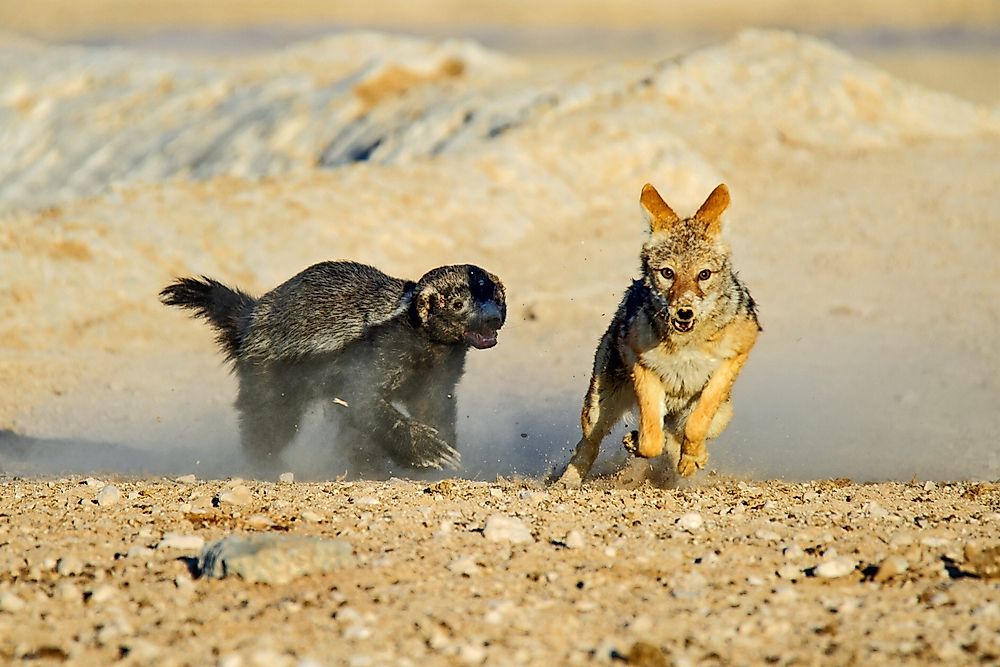
This is one of the most widespread "interesting facts" about Honey Badgers. It does sound like one of the internet make-believes, so we did some investigating. We were unable to find any tangible evidence of the repeatedly used "go for the manhood" tactics on prey or humans. So we remain skeptical that Honey Badgers deliberately target the reproductive parts. More likely, it is a generalization from an accidental situation: Honey Badgers have been seen challenging very large animals like buffalos and rhinos if they approached their den or young. When an enemy is so huge, they will bite indiscriminately, whatever they can reach. Still, the persistence of this anecdote shows that Honey Badgers make a strong impression!
8. Never-Aging Spirit
Stoffel is an 18-year-old relatively friendly Honey Badger who became a star of a movie, documenting his handler's failures to contain the elderly Badger. After one of his escapes, he was mauled by lions. As s soon as he got out of the hospital, he once again escaped his enclosure. When humans double-locked the gate, Stoffel climbed a tree and jumped over the fence to raid the kitchens (attempting to chew on an eagle along the way). When they removed the trees, Stoffel dag up a few rocks, rolled them into a pile at one corner of his enclosure, and used as a ladder. In response, his handlers removed everything from the enclosure except the dirt under his feet. After some observation, Stoffel rolled the dirt into a ball, hopped the fence again, and then broke into his handlers' house to explore their food stock. Stoffel is not an exceptionally smart example of a Honey Badger: he is pretty typical.
7. Honey Badges Are Incredibly Intelligent: They Can Use Tools And Cooperative Strategies
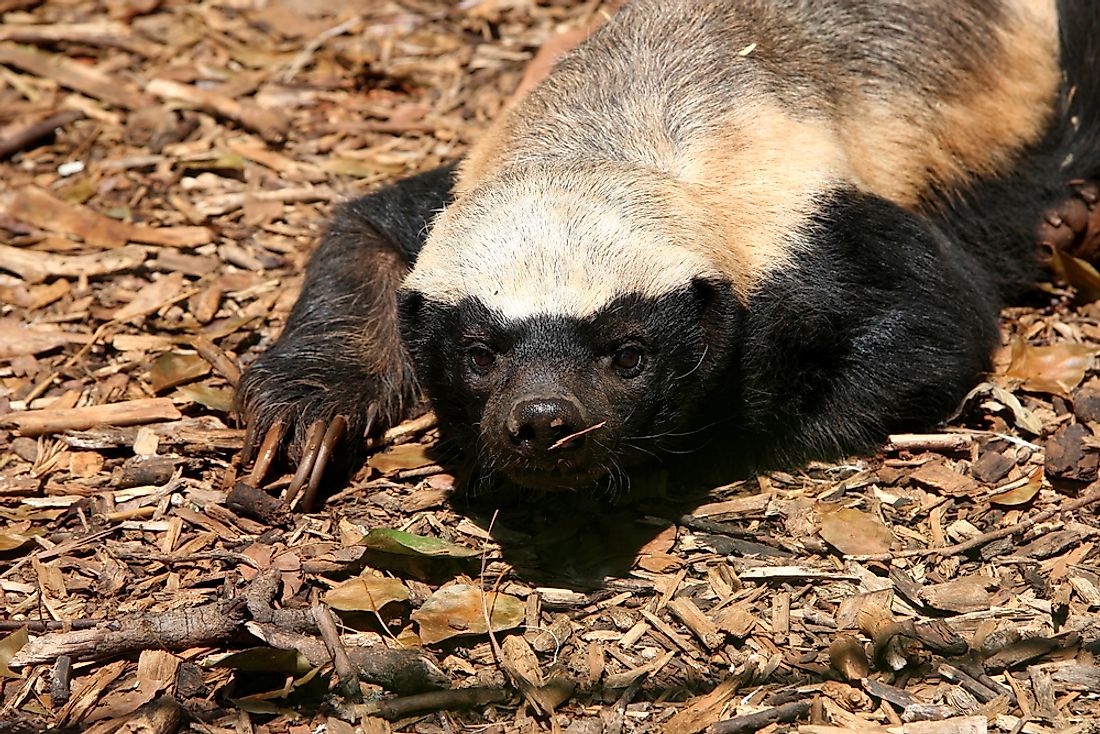
For its size, the Honey Badger has an enormous brain. They can undo locks, unwrap wires and climb out of enclosures. They are one of only a few critters on Earth known to use a variety of tools: not only one or two they discovered by accident. Wild Honey Badgers roll large logs around to climb trees or fences. They have been seen to purposely search for a tool to use and innovate on the go, which is remarkable. In captivity, Honey Badgers carefully observe their enclosure looking for a way out. There are validated (recorded on video) examples of opening gates that have been bolted shut.
Famous Stoffel even used teamwork to bypass security measures. When handlers locked him in a cage built to contain him, he escaped by convincing a female Honey Badger to cooperate to open the gate. They even coordinated their efforts. We watched the video twice because it looks unrealistic: yet appears to be the truth!
6. Evolutionary Smart
But why would a Honey Badger choose such a dangerous diet and not avoid venomous snakes, like more sensible mammals? Snakes are a great source of meat with very little competition for them. Plus, they are relatively slow and not overly cautious prey with just one "dangerous end" instead of a full set of teeth, claws or hooves.
Venom is still a formidable weapon: there are more than 100 proteins that affect various vital mechanisms in the body of the bitten animal. Honey Badgers do not have the protection against all of them: instead, the same as mongoose, their defense is mainly focused on alpha-neurotoxins that paralyze the muscles used for breathing. So even if a Badger gets knocked out (which happens and has been recorded), they, at least, do not asphyxiate in their sleep.
5. They Are Not Entirely Immune To The Snake And Bee Venom
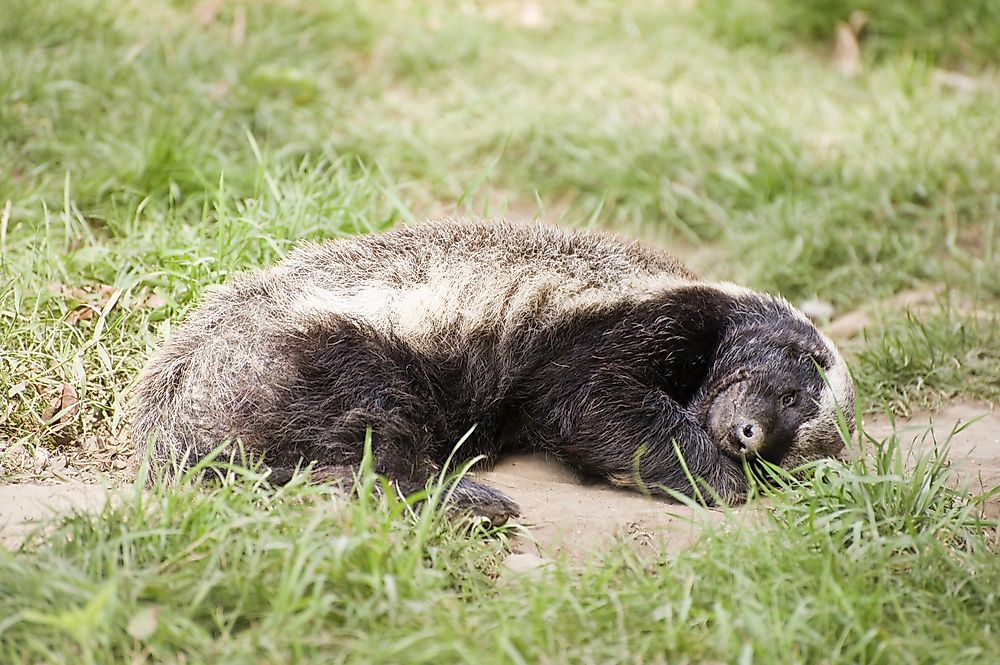
Honey Badgers get their name from their propensity to seek out and eat honey and bee larvae: they even dare to go for Africanized Honey Bee ("killer bees") hives. However, their immunity is undoubtedly exaggerated. Honey Badgers can endure a lot longer than most other animals thanks to their tough skin, and they survive more venom than others, but they have been known to get stung to death during a hive raid.
Similarly, the Honey Badger does not have full immunity to snake venom, and they die from the toxin or the malnourishment following a long sickness. But the critter does have enough resistance, plus dense fur, thick skin, and remarkable agility. Most of the time, the bite either does not penetrate the skin, or the snake is crushed fast enough not to land too many bites. A strike from, for example, Puff Adder can penetrate their skin, and it will eventually knock the Honey Badger out for a while, but more often than not, they survive.
4. Honey Badgers Are Not Invincible, But Nature Is Pragmatic
They are sturdy and impressive, but they do get killed by leopards and lions at times. However, nature is pragmatic: unless desperate (or young and inexperienced), larger predators avoid attacking smaller predators. In the wild, death from an infection or starving due to a temporary injury preventing being able to catch prey for a few days is a reality.
And Honey Badger looks particularly unattractive on these nature's scales: they are small and scrawny, and they stink. Yet, they are vicious and dangerous, guaranteed to land a lot of harm even if they die eventually. So they offer a massive risk, and little reward, to any predator. You are going for a tiny snack where you are guaranteed to end up exhausted and wounded? No, thanks.
3. Honey Badger’s Thick And Loose Skin Is a Tremendous Tactical Advantage
Honey Badgers have very thick - about 1/4 inches - rubbery skin and strong, slick guard coat. The Honey Badger's skin is also quite loose, which allows it quite a bit of freedom of movement within the skin. Together with a flexible spine, it is particularly useful when it finds itself in the predator's clutches: there is barely any place to hold a Honey Badger without it being able to twist itself in a position to attack you. It can simply bend its body and attack the predator's face with claws and sharp teeth — a high price for such a humble meal.
2. Teeth, Jaws, And Claws
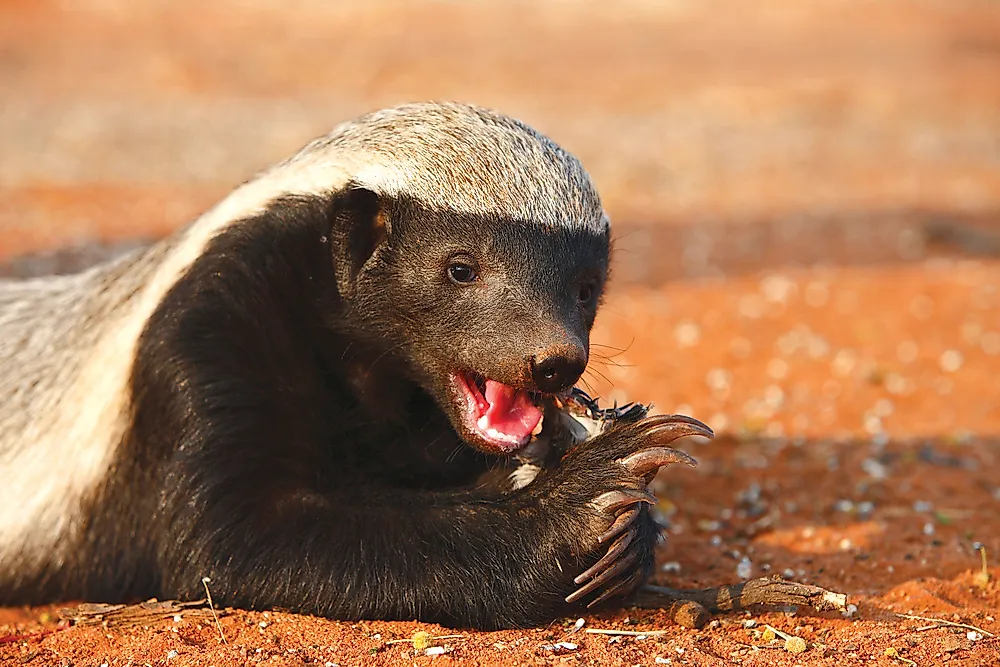
Honey Badgers have sharp teeth and incredibly powerful jaws capable of cracking bones. The jaws are even strong enough to open a turtle's shell and eat it. The claws are also large and very functional: Honey Badgers can dig quickly into hard ground. It takes them a few minutes to dig a hole deep enough to hide from unwanted attention or excessive heat or to get their food from under the ground.
1. Honey Badger Is Not Really a Badger
To start with some confusion, Honey Badgers (Mellivora capensis), also known as ratels, are not Badgers. They are members of the weasel family. They are opportunistic carnivores a bit larger than a house cat; they live throughout sub-Saharan Africa and the Middle East and in parts of Asia. Honey Badgers would eat almost anything: snakes, insects, birds, reptiles, bee larvae, small mammals, carrion, fruits, young crocodiles, rubbish, roots. Same as Wolverines, they eat every part of the prey.











